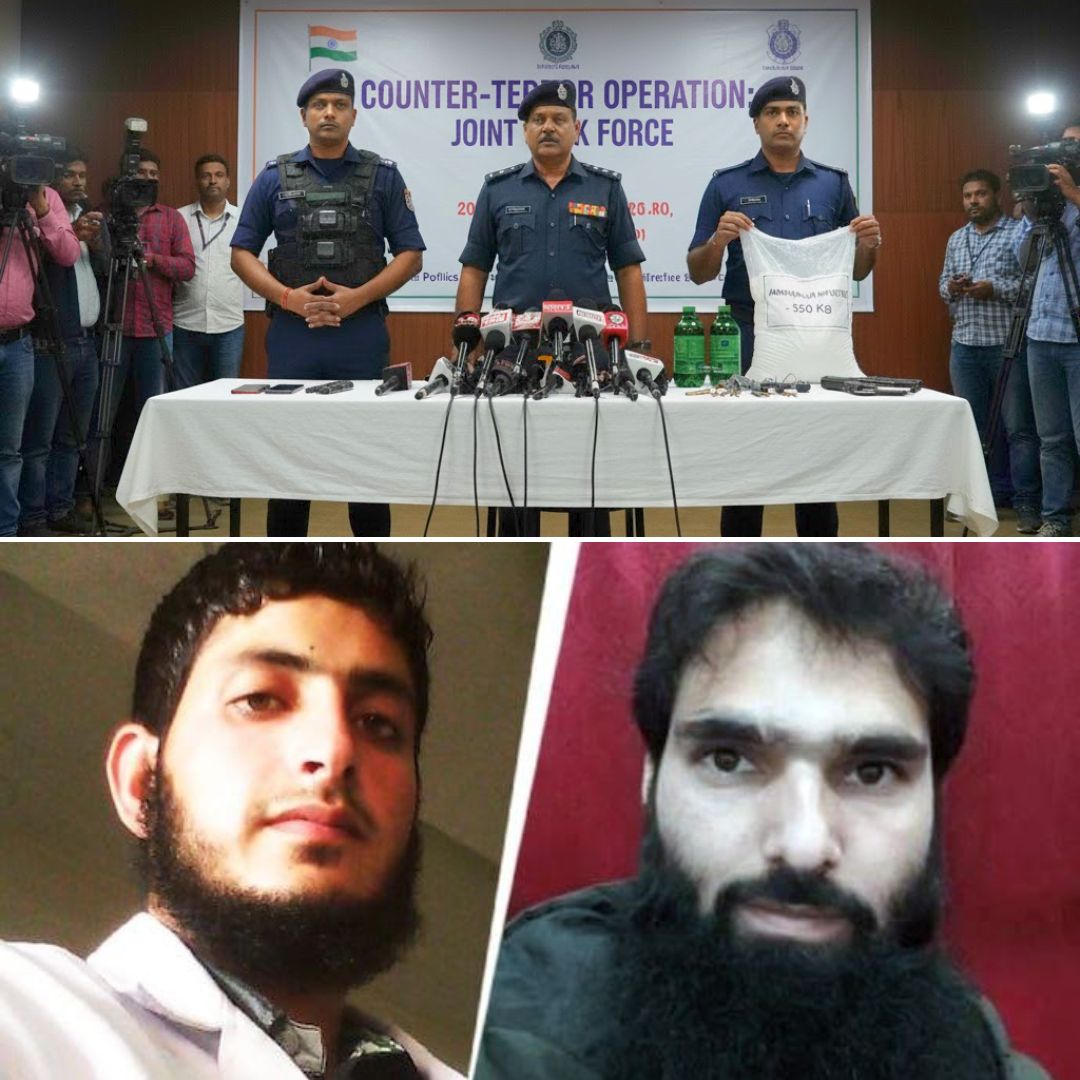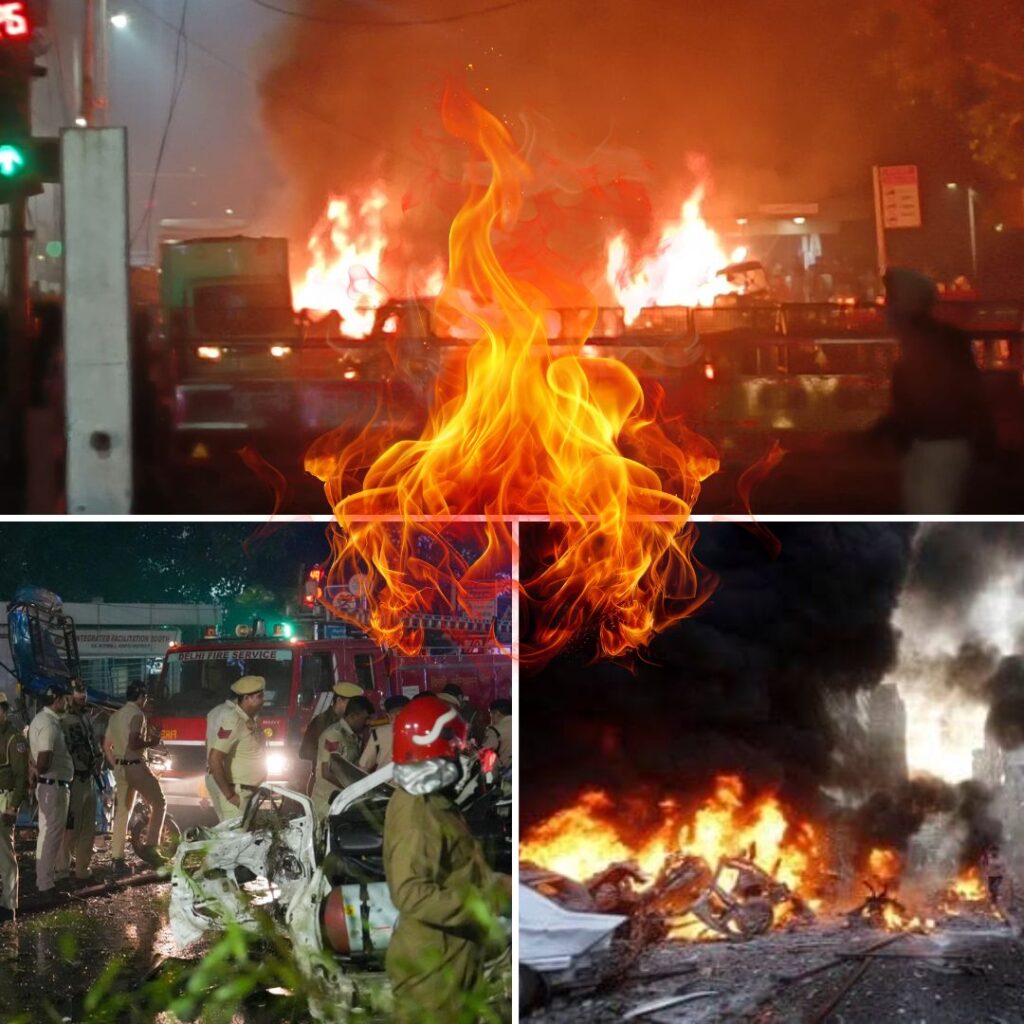In a counter-terror operation that has gripped national attention, police recovered roughly 350 kilograms of explosives, assault rifles, timers, and bomb-making equipment from a rented house in Faridabad, Haryana.
The seizure-among the largest uncovered near the national capital-followed the arrest of two Kashmiri doctors with suspected links to Jaish-e-Mohammed (JeM). Investigators are now probing a broader network with roots in Jammu & Kashmir and potential pan-India ambitions.
Authorities say the investigation is ongoing, with further arrests possible as agencies coordinate to prevent future attacks.
Sequence of Events: From Posters to Explosives
The chain of events began on 27 October, when Srinagar police noticed posters supporting JeM at several prominent locations. CCTV review identified Dr Adil Ahmad Rather, a faculty member at Government Medical College (GMC) in Anantnag, as the alleged individual behind the act.
Acting on leads, police arrested Rather on 6 November at a hospital in Saharanpur, Uttar Pradesh. During questioning, he reportedly admitted indirect links to a sleeper cell. His disclosures led security forces to a second suspect: Dr Muzammil Shakeel, a lecturer at Al-Falah University in Faridabad.
A joint police raid targeted Shakeel’s rented flat in Dhauj village, resulting in the haul of explosives, an AK-47 rifle, pistols, cartridges, chemical solutions, and 20 timers-materials potentially enough for several high-impact explosive devices.
The Haul and Ongoing Probe
Investigators recovered 14 bags of ammonium nitrate (350 kg in total), 84 cartridges, multiple weapons, and dozens of components from Shakeel’s flat. Faridabad Police Commissioner Satender Kumar Gupta clarified that the substance was not RDX, as initially speculated, but ammonium nitrate-a commonly misused explosive.
“This confiscation is a critical breakthrough,” stated Gupta, adding that the cache had the capacity for large-scale destruction if deployed.
Both doctors are presently in custody under the Arms Act and Unlawful Activities (Prevention) Act, with the seized materials sent for forensic examination. Initial analysis confirmed the explosives’ potency, prompting further search operations across the Faridabad and Saharanpur region.
The local footprint also widened with the scrutiny of a woman doctor employed at Al-Falah University, whose car contained additional arms and was searched for evidence.
Security forces believe the group used academic and medical networks to evade detection, storing dangerous materials close to the National Capital Region for strategic access.
Officials highlighted the possible involvement of a local imam and cross-border links that may have supplied or supported the retrieval of explosive materials.
Digging Deeper: Network Origins and Targets
Background inquiries reveal the network’s radicalisation efforts may have started around 2021–22, allegedly under the guidance of an individual named Hashim, later reorganised under a leader called ‘Dr Omar’. Police found evidence of recruitment for radicalisation in colleges, campus meetings, and local communities.
Intelligence sources told News18 the two doctors envisioned establishing their own “militant tanzim,” aspiring to emulate JeM and Lashkar-e-Taiba’s militant cells.
Cross-referencing recovered digital messages and physical evidence, authorities surmise the group’s target list may have included sites in Delhi and Lucknow, although specifics remain unconfirmed amid ongoing investigations.
The presence of external funding and donations at the university hospital, as well as personnel connections spanning J&K, Haryana, and the NCR, appears to have provided logistical and economic cover for the alleged activities.
Forensic efforts continue to trace supply chains and decode seized digital records for further leads. Both state and national agencies, including the Intelligence Bureau and potentially the NIA, have now escalated the investigation.
The Logical Indian’s Perspective
This episode stands as a sobering reminder of how extremists can exploit professional networks and community trust to further their aims.
The Logical Indian believes that vigilance should not erode humanity, and social harmony must be actively fostered to counter radical narratives.
Justice demands fairness and fact-based interrogation, without undue suspicion towards honest professionals or communities.












